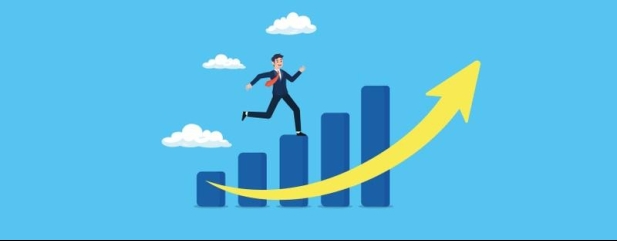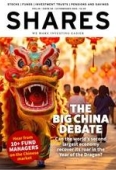Meet the only UK fund to deliver double-digit gains five years in a row: Argonaut Absolute Return

Out of more than 3,500 regulated investment funds in the UK industry VT Argonaut Absolute Return (B7FT1K7) says to ‘the best of its knowledge’ it is the only one to have delivered double-digit returns for the last five years in a row.
The fund’s performance over the past year is particularly eye-catching, returning more than 30% to investors. Since launch in 2009 the fund has achieved a return of 227.3%.
While past performance is not a guide to the future, these returns mean fund manager Barry Norris is a man worth listening to and this author had that opportunity to do just that face-to-face recently.
A LONG/SHORT STRATEGY
The fund’s strategy involves taking both ‘long’ and ‘short’ positions in stocks. As a reminder a long position is when a fund manager buys a stock or stocks as they believe it will go up in the future. A short position is when a fund manager bets against a stock, borrowing shares with the aim of selling them and then buying them back later at a lower price.
The fund has 32 long holdings and 40 short holdings as of 31 January 2024. So far this year the fund has made 2% in its long book and 3% from its short book.
Norris says there are advantages of combining the two strategies the first one being that ‘you get two goes at stock-picking’.
Second, he adds: ‘By combining the two we can produce a return that not only outperforms the market but crucially delivers at contrasting times to the market and therefore most other funds. Whilst we are proud about our performance record, the value of our returns to investors seeking proper diversification is our unique selling point.’
‘The value of short selling is more easily identifiable in periods of market weakness. There were five negative market months in 2023 during which MSCI Europe delivered a negative return of 11%.’
‘In those same months the fund delivered a positive return of 24%,’ said Norris in his latest Argonaut Absolute Return fund factsheet.
WHAT ARE BARRY NORRIS’ RED FLAGS
Even if you would never even consider short selling yourself, understanding Norris’ process in identifying shorting candidates could help you judge a prospective investment and avoid investing in a dud. While he is understandably guarded about his method, managers very rarely want to reveal their ‘secret sauce’, we did manage to glean some nuggets.
‘Generally, we look for expensive stocks where the market is overestimating estimating earnings potential,’ Norris says. ‘However, we characterise our shorts into three main types: frauds (where management is misleading or stealing from shareholders), fads (growth stocks that will stop growing) and fades (value stocks that cannot be saved).’
Norris gives past examples of stocks that fall into these categories including: Wirecard – which falls into the fraud category, Cineworld – falls into the poor management category and Los Angeles-based producer of plant-based meat substitutes Beyond Meat (BYND:NASDAQ) – the over-hyped category along with Swedish alternative food company Oatly (OTLY:NASDAQ).
Norris’ also looks for companies whose management are ‘overly promotional in their market communications’ or ‘overly reliant on capital markets, government subsidies or client concentration’.
He also refers to companies which have a ‘poor cash conversion,’ have an ‘over reliance on serial acquisitions with no obvious synergies’.
Finally, another ‘red flag’ is a company whose management buys or sells assets from friends and family and ‘insider sales’.
WHAT IS NORRIS BUYING AND SHORTING
In January, Norris found ‘a happier hunting ground for shorts’ according to the fund’s factsheet. Top performing constituents of this part of the portfolio include Rolex seller Watches of Switzerland (WOSG) which fell 47%, owner of rehab centre The Priory Medical Properties Trust (MPW:NYSE) down 37% and electric vehicle seller Rivian Automotive (RIVN:NASDAQ) down 35%.
Norris shorting Watches of Switzerland is of a piece with his negative view on the luxury sector which has fallen victim to a slowdown in the Chinese economy and a lack of demand from high-net-worth individuals cutting back on spending during the cost-of-living crisis.
In relation to Norris’ long holdings, he has been looking closely at the shipping/tanking sector which could see higher rates as a result of the ongoing crisis in Red Sea and geopolitical tension between the Houthis, UK, and US.
The funds top five long positions include: global tanker company Hafnia (1OQ:FRA), Danish shipping company Torm (TRMD-A:CPH), Texas-based building materials company Builders First Choice (BLDR:NYSE), global uranium company Cameco (CCJ:NYSE) and jewellery manufacturer Pandora (PNDORA:CPH).
Norris says: ‘Whilst we are sceptical about the effect of this [Red Sea disruption] on oil prices, we think this Iranian proxy war is not easily resolved and has the potential to cause sustained disruption to Suez Canal transits, which would increase demand for ton-mileage.’
While the focus of the fund is not necessarily on income it does offer a 2.36% yield from its ‘long’ holdings.
WHAT ARE THE FEES?
The fund’s returns are undoubtedly impressive but are there any drawbacks? While performance has been strong of late and, in fairness, overall, it can be volatile and Norris’ approach means it will deviate significantly from the wider market – often to investors’ benefit but occasionally to their detriment. There is also a performance fee which according to the fund’s January factsheet his can be ‘20% of anything above the hurdle rate (5% per annum)’.
Ongoing charges are 0.81%. When asked about these ongoing charges and performance fee, Norris says they are ‘justified’ considering the performance of the fund which has delivered during difficult macroeconomic times.
Important information:
These articles are provided by Shares magazine which is published by AJ Bell Media, a part of AJ Bell. Shares is not written by AJ Bell.
Shares is provided for your general information and use and is not a personal recommendation to invest. It is not intended to be relied upon by you in making or not making any investment decisions. The investments referred to in these articles will not be suitable for all investors. If in doubt please seek appropriate independent financial advice.
Investors acting on the information in these articles do so at their own risk and AJ Bell Media and its staff do not accept liability for losses suffered by investors as a result of their investment decisions.
Issue contents
Daniel Coatsworth
Funds
Great Ideas
News
- Big banks expected to report largely benign fourth quarter earnings
- Shares in specialty chemical maker Victrex hit fresh multi-year lows
- Global data services specialist Experian continues to deliver positive news
- Consolidation in commercial property market shows no signs of slowing
- S&P 500 surpasses 5,000 milestone and chip design firm ARM almost doubles in a week

 magazine
magazine








